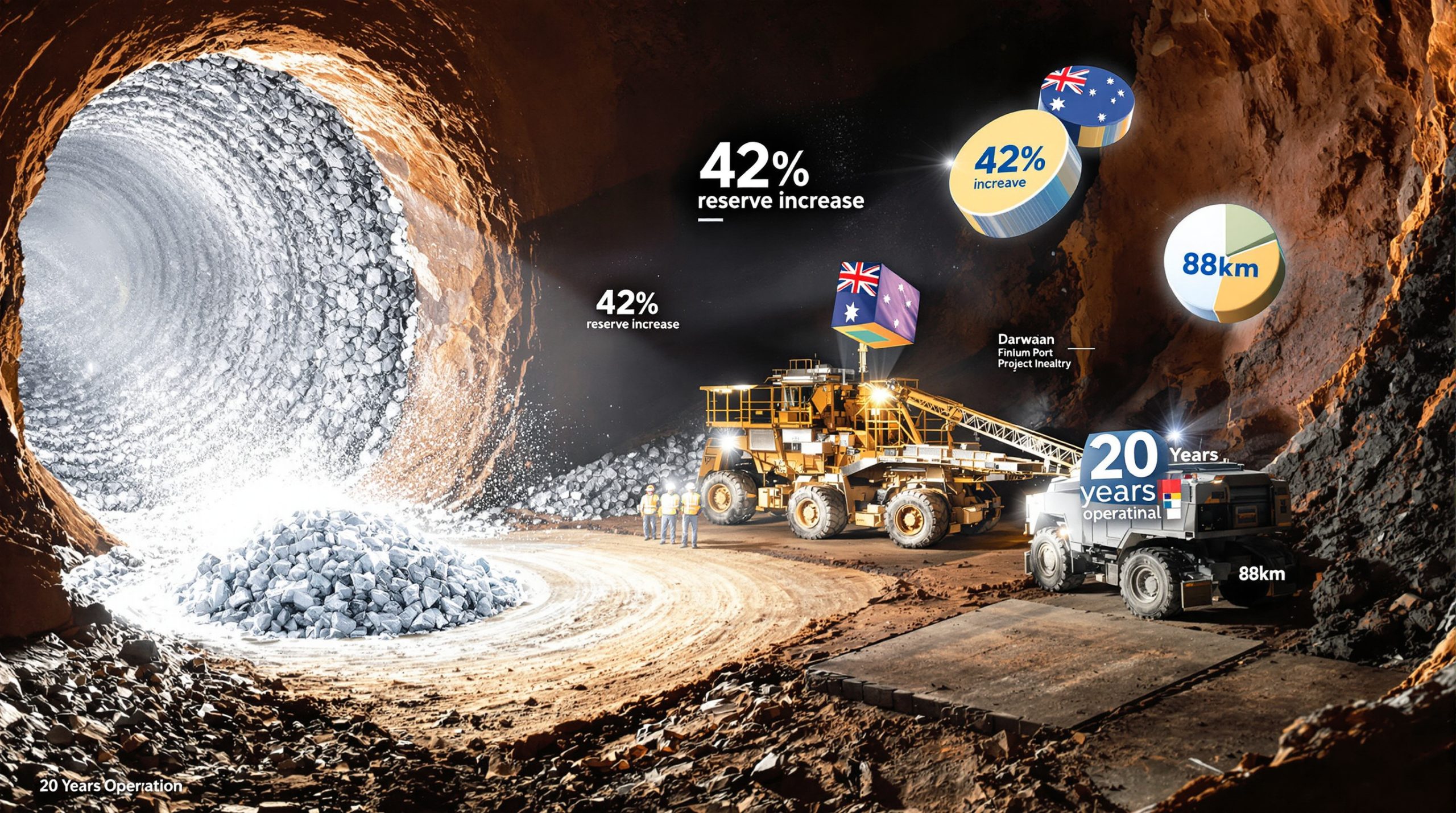What's Driving the Current Aluminum Scrap Market?
The aluminum scrap market is exhibiting unusual resilience despite being in what would traditionally be considered an off-season period. Primary aluminum prices continue showing remarkable strength, with SMM A00 aluminum ingot prices reaching 20,860 yuan/mt as of early July 2025, representing a significant 250 yuan/mt increase from the previous week. This upward trajectory in primary aluminum creates ripple effects throughout the scrap market, counteracting what would typically be seasonal demand suppression.
Regional Price Differentiation Trends
A fascinating development in the current market is the growing regional price divergence across China. Eastern China markets, including Shanghai, Jiangsu, and Shandong provinces, demonstrate highly responsive pricing behaviors, with daily adjustments of 50-100 yuan/mt that closely track primary aluminum price movements.
In stark contrast, inland provinces such as Jiangxi and Hubei show significantly delayed price adjustments and greater stability. Industry experts from Shanghai Metal Market (SMM) note that "regional price differences will further widen" due to these differentiated demand patterns and varying exposure to policy disturbances. This geographical divergence has created widening price gaps across the national market, presenting both challenges and strategic opportunities for market participants.
Supply-Demand Imbalance by Material Type
Different scrap categories are experiencing varied market conditions, reflecting the complex nature of the aluminum recycling ecosystem. Shredded aluminum tense scrap maintains particularly strong price resilience due to persistent supply constraints, with quotes holding steady between 15,800-17,300 yuan/mt (tax excluded). According to SMM analysis, "Shredded aluminum tense scrap, with its supply remaining tight, showed strong resilience against price drops."
Meanwhile, baled UBC (used beverage cans) faces downward pressure from weak downstream demand, though still showing modest price increases of about 50 yuan/mt week-over-week, closing at 15,350-15,850 yuan/mt (tax excluded). This disparity between different scrap types highlights how supply chain logistics and collection infrastructure can significantly impact market dynamics, even within the same commodity sector.
Price Support Mechanisms
The persistence of high aluminum scrap prices during the traditional off-season is primarily attributable to three key factors: tight supply conditions for certain scrap types, strong primary aluminum prices providing foundational support, and constrained material circulation that prevents typical seasonal price corrections despite weaker demand signals. These factors collectively create a price floor that has kept the market elevated despite seasonal headwinds.
How Are Cost Pressures Affecting Secondary Aluminum Production?
Secondary aluminum producers currently face mounting pressure from multiple rising input costs, creating a challenging operational environment. Beyond the already-discussed aluminum scrap price increases, silicon prices have entered a notable upward trend since late June 2025, with oxygen-blown #553 silicon increasing by 500 yuan/mt week-over-week to reach 8,700 yuan/mt.
Copper price prediction trends have similarly risen during this period, creating a perfect storm of input cost escalation. This collective increase in core raw material costs has significantly elevated production expenses for secondary aluminum alloys like ADC12, squeezing margins throughout the value chain.
Widening Price Differentials and Margin Compression
The price gap between A00 aluminum and aluminum scrap has expanded notably in recent weeks, with the differential for mixed aluminum extrusion scrap (free of paint) in Foshan widening by 119 yuan/mt to reach 1,857 yuan/mt. This growing disparity, combined with manufacturers' inability to pass through higher costs to customers in a weak demand environment, has intensified theoretical loss pressures across the secondary aluminum industry.
The economic pressures have forced producers to make difficult decisions regarding inventory, production rates, and sales strategies. With demand insufficient to absorb cost increases, many producers find themselves in an increasingly precarious financial position.
Operational Challenges and Production Adjustments
Facing the dual challenges of raw material supply deficits and weak market demand, secondary aluminum producers have implemented a range of strategic responses to navigate current conditions. These include:
- Short-term furnace shutdowns for maintenance during demand lulls
- Reduced operating rates to minimize losses during unfavorable price periods
- Hesitancy to sell finished products due to difficulty sourcing replacement materials
- Cautious inventory management amid accumulating social stocks
According to SMM market feedback, "tightened raw material circulation made it difficult for manufacturers to source materials, deepening their reluctance to sell finished products." This dynamic creates a self-reinforcing cycle where supply constraints persist despite weak end-user demand.
Supply Chain Disruptions
The tightening of raw material circulation represents a significant disruption to traditional supply chain patterns in the aluminum scrap ecosystem. Collection networks, transportation logistics, and cross-regional material flows have all experienced friction, resulting in localized supply shortages even as total inventory levels rise. This paradoxical situation highlights the complexity of the secondary aluminum supply chain and the importance of robust waste management solutions for the industry's sustainability.
What's Happening in the Secondary Aluminum Alloy Market?
The secondary aluminum alloy market is experiencing a notable divergence between futures and spot market performance. While the futures market for cast aluminum alloy has shown strong upward momentum, reaching a high of 19,985 yuan/mt, this bullish sentiment hasn't translated proportionally to the spot market, where secondary aluminum alloy price increases have been sluggish at best.
Futures vs. Spot Market Divergence
The theoretical premium of SMM ADC12 against the most-traded futures contract has narrowed significantly from 330 yuan/mt to just 160 yuan/mt, indicating substantial market resistance to higher prices. This compression of the premium reflects the disconnect between financial market sentiment and physical market realities, where end-user demand remains constrained by seasonal factors and economic conditions.
The spot price for SMM ADC12 has remained flat week-over-week at 20,000-20,200 yuan/mt, even as futures prices climb. This price stagnation in the physical market underscores the challenges faced by producers attempting to pass through higher input costs.
Inventory Accumulation Trends
Social inventory levels continue to rise despite production adjustments throughout the industry. As of early July 2025, SMM reported that secondary aluminum alloy ingot inventory in major domestic consumption areas reached 23,232 mt, representing a significant increase of 2,646 mt from the previous week.
This inventory build-up reflects the ongoing imbalance between production and consumption, with producers caught between the need to maintain operations and the reality of insufficient end-user demand. The accumulation of unsold material creates additional pressure on market prices and further complicates production planning decisions.
Trader Activity vs. End-User Demand
A striking characteristic of the current market is the disconnect between trading activity and actual industrial consumption. Despite increased activity from futures and spot traders during recent weeks and higher trading volumes for delivery brands, SMM reports that "the end-use consumption market remains sluggish."
This divergence between trader interest and end-user demand poses a significant barrier to sustainable price increases. While speculative interest may temporarily support prices, the fundamental weakness in industrial consumption suggests limited upside potential without a meaningful improvement in downstream demand conditions.
Price Resistance Factors
The secondary aluminum alloy market faces multiple forms of price resistance, including:
- Seasonal demand weakness limiting purchasing volume
- Downstream manufacturers operating with reduced production schedules
- Inventory overhang creating sales pressure
- Cautious buying strategies from end-users anticipating potential price corrections
These resistance factors collectively create a challenging environment for producers attempting to pass through higher input costs, resulting in compressed margins throughout the value chain.
What Factors Are Influencing Market Sentiment?
Market sentiment in the aluminum scrap and secondary aluminum sectors is being shaped by a complex interplay of seasonal patterns, supply constraints, and cost pressures. Understanding these influences is crucial for market participants attempting to navigate current conditions and position themselves for future developments.
Seasonal Demand Patterns
The high-temperature off-season is a significant factor suppressing demand, particularly affecting downstream orders from die-casting enterprises. This seasonal weakness is a well-established pattern in the industry, but its effects are magnified in the current environment by additional headwinds.
According to SMM analysis, the combination of high aluminum prices and declining orders has prompted some die-casting operations to reduce production, further dampening market sentiment. This reduction in downstream activity creates a feedback loop that reinforces the seasonal weakness, potentially prolonging the duration of the typical summer demand trough.
Raw Material Circulation Challenges
Market feedback indicates that tightened raw material circulation is creating significant operational challenges for manufacturers. The difficulty in sourcing materials has increased reluctance to sell finished products, as producers worry about their ability to replace raw material inventories at economical prices.
This supply constraint creates a complex dynamic where producers are caught between material shortages and weak end-user demand. The situation is particularly pronounced for certain high-demand scrap types, such as shredded aluminum tense scrap, where supply remains consistently tight despite broader market weakness.
Cost Support vs. Demand Resistance
Despite resistance to price increases due to weak demand, the underlying logic of cost support remains intact and provides a fundamental floor for market prices. As SMM notes, "In the absence of substantial improvement in demand, prices encounter resistance in rising, but the cost support logic remains intact."
The collective rise in costs for core raw materials including aluminum scrap, silicon, and copper provides a floor for prices, while demand weakness creates a ceiling. This dynamic results in the expectation of rangebound price fluctuations in the near term, with limited potential for either significant declines or substantial increases without a fundamental shift in market conditions.
Speculative Influences
The divergence between futures market performance and physical market conditions introduces an additional layer of complexity to market sentiment. Speculative activity in the futures market can create temporary price supports or pressures that may not reflect fundamental supply-demand conditions.
This financial market influence adds volatility and unpredictability to an already complex market environment, requiring market participants to distinguish between transient speculative effects and sustainable fundamental trends when making operational decisions.
What's the Outlook for the Aluminum Scrap and Secondary Aluminum Markets?
Looking ahead, the aluminum scrap and secondary aluminum markets are expected to maintain their current patterns of high-level fluctuation with cautious price adjustments in the coming weeks. The outlook varies significantly by material type and geographic region, reflecting the complex and fragmented nature of these markets.
Short-Term Price Projections
Shredded aluminum tense scrap prices are projected to remain resilient within the 15,800-17,400 yuan/mt range, supported by the persistent tight supply conditions that have characterized this segment of the market. The limited availability of this material is expected to continue providing price support even amid seasonal demand weakness.
In contrast, baled UBC may continue its downward trend due to off-season demand suppression, potentially dropping to 15,200-15,700 yuan/mt in the near term. This divergence in price projections highlights the importance of material-specific analysis when navigating the aluminum scrap market.
Regional Market Divergence Expectations
The regional price gap is anticipated to widen further in the coming weeks, according to SMM analysis. Eastern China markets may experience daily fluctuations of 100-200 yuan/mt due to primary aluminum price linkage and policy disturbances, creating a volatile trading environment in these regions.
Inland provinces, with their delayed price adjustments and differentiated demand patterns, lack the momentum to follow price increases, potentially leading to greater market fragmentation. This growing regional divergence creates both challenges and opportunities for market participants with flexibility in their sourcing and distribution strategies.
Critical Monitoring Indicators
Market participants should pay close attention to several key indicators that could signal shifts in current market dynamics:
- Marginal changes in raw material circulation (particularly ADC12 aluminum shavings supply)
- Early signals of terminal order recovery, especially in the automotive sector
- Operating rates in the secondary aluminum industry
- Inventory pressure dynamics at various points in the supply chain
- Competition between raw material costs and demand-side factors
Monitoring these indicators can provide valuable early warning of potential market inflection points, allowing proactive adjustment of business strategies in response to changing conditions.
Potential Market Catalysts
Several factors could potentially disrupt current market patterns and trigger more significant price movements:
- Meaningful improvement in automotive industry demand
- Policy interventions affecting metal markets or industrial production
- Significant shifts in primary aluminum prices
- Changes in raw material import/export dynamics
- Post-summer seasonal demand recovery exceeding expectations
These potential catalysts bear close watching, as they could signal the end of the current rangebound market environment and usher in a new phase of price development.
How Can Market Participants Navigate Current Conditions?
Navigating the current aluminum scrap and secondary aluminum markets requires strategic thinking, operational flexibility, and careful risk management. Market participants can implement several approaches to optimize their positions amid challenging conditions.
Strategic Inventory Management
Given the current market dynamics, careful inventory management is crucial for both buyers and sellers. With social inventory continuing to accumulate and prices at elevated levels, maintaining optimal stock levels can help buffer against price volatility while ensuring sufficient material availability.
For secondary aluminum producers, balancing raw material inventory against finished product stocks requires particular attention. The difficulty in sourcing replacement materials suggests value in maintaining adequate raw material reserves, while the accumulation of finished product inventory creates price risk and ties up working capital.
Inventory Management Strategy: Consider implementing a tiered inventory system with minimum safety stock levels for critical materials and maximum ceiling levels for finished products. Adjust these thresholds based on real-time market signals and cash flow requirements.
Regional Sourcing Strategies
The widening regional price differences present opportunities for strategic sourcing. Companies with flexibility in procurement locations may benefit from targeting inland provinces with more stable pricing rather than eastern regions experiencing more volatile price adjustments.
Developing relationships with suppliers across multiple regions can enhance procurement flexibility and create opportunities for geographic arbitrage when regional price differentials exceed transportation costs. This approach requires strong logistics capabilities but can yield significant cost advantages in the current fragmented market environment.
Production Planning Considerations
Secondary aluminum producers should consider implementing flexible production scheduling based on raw material availability and demand signals. Short-term maintenance periods during demand lulls can help manage costs while preserving operational capability for when market conditions improve.
Potential approaches include:
- Concentrating production in shorter, more efficient campaigns
- Prioritizing production of higher-margin alloy grades when operating at reduced rates
- Coordinating maintenance schedules with periods of weakest demand
- Maintaining flexibility to quickly ramp production when market signals improve
This operational flexibility can help minimize losses during challenging market periods while maintaining readiness to capitalize on improving conditions.
Cost-Pass-Through Mechanisms
Developing more effective cost-pass-through mechanisms with customers may help alleviate margin pressure in a volatile raw material environment. This could include:
- More frequent price adjustments based on objective raw material indices
- Material surcharges that isolate raw material cost components from base processing charges
- Contract structures incorporating sliding scales tied to key input costs
- Risk-sharing arrangements with key customers for critical material components
These approaches can help distribute raw material price risk more equitably throughout the value chain, reducing the margin compression currently experienced by secondary aluminum producers.
FAQ About the Aluminum Scrap and Secondary Aluminum Markets
What's causing the high aluminum scrap prices during the traditional off-season?
The persistence of high prices is primarily driven by three key factors. First, tight supply of certain scrap types, particularly shredded aluminum tense scrap, creates ongoing competition for available material. Second, strong primary aluminum prices provide foundational support throughout the value chain, with SMM A00 aluminum ingot prices reaching 20,860 yuan/mt as of early July 2025. Third, constrained material circulation prevents typical seasonal price corrections despite weaker demand, as producers remain reluctant to sell when replacement material is difficult to source.
Why is there such a price difference between eastern and inland Chinese markets?
Eastern markets (Shanghai, Jiangsu, Shandong) have more immediate exposure to primary aluminum price movements and trading activity, resulting in more responsive daily price adjustments of 50-100 yuan/mt. These regions are more closely integrated with international markets and financial trading centers, creating greater price sensitivity.
In contrast, inland provinces experience delayed price transmission effects and have different demand dynamics, creating a lag in price movements. Their relative isolation from major trading hubs and greater focus on local supply-demand fundamentals results in more stable, but potentially less competitive, pricing structures.
How are secondary aluminum producers responding to the current market challenges?
Producers are implementing various strategies to navigate the challenging market environment. These include temporary production cuts and reduced operating rates to minimize losses during unfavorable price periods. Many are practicing careful inventory management, balancing the need to maintain raw material stocks against the risks of accumulating finished product inventory.
Some producers are showing reluctance to sell finished products due to concerns about raw material replacement costs, preferring to wait for more favorable market conditions. Others are exploring alternative sourcing strategies and regional diversification to mitigate supply risks and cost pressures.
What factors might trigger a change in the current market dynamics?
Several key factors could potentially disrupt current market patterns:
- Improvements in terminal automotive demand would directly boost consumption of secondary aluminum alloys like ADC12
- Easing of raw material circulation constraints would improve supply availability and potentially reduce price premiums
- Seasonal demand recovery post-summer could rebalance the market if it exceeds typical patterns
- Significant changes in primary aluminum prices would flow through to scrap values
- Policy interventions affecting metal markets, such as environmental regulations or trade measures, could rapidly alter market conditions
Market participants should monitor these potential catalysts closely, as they could signal the end of the current rangebound market environment and usher in a new phase of price development.
How do silicon prices affect secondary aluminum production costs?
Silicon is a critical alloying element in many secondary aluminum products, particularly in die-casting alloys like ADC12. The recent rise in silicon
Ready to Spot the Next Major Mineral Discovery?
Stay ahead of the market with Discovery Alert's proprietary Discovery IQ model, which provides instant notifications on significant ASX mineral discoveries, turning complex data into actionable investment insights. Explore why historic discoveries can generate substantial returns by visiting our dedicated discoveries page and begin your 30-day free trial today.




